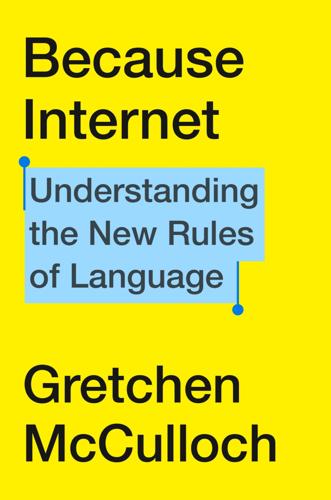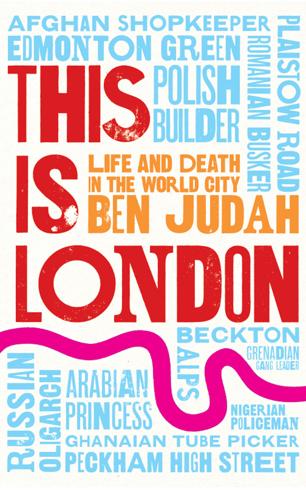multicultural london english
description: sociolect of English in the United Kingdom
4 results

Because Internet: Understanding the New Rules of Language
by
Gretchen McCulloch
Published 22 Jul 2019
But if you get a big enough group of people moving into the same region at the same time, they can alter the local dialect. The vowels of Raleigh, North Carolina, became less Southern after a wave of tech workers from Northern states started arriving in the 1960s, and Cockney has been replaced in working-class central London by Multicultural London English, which draws on a mix of Cockney, Afro-Caribbean English, Indian English, Nigerian English, and Bangladeshi English, especially since many Cockneys moved out to the suburbs after the Second World War. So when we’re analyzing internet dialects, it makes sense to look at it through the lens of our founding population and our waves of immigration.
…
The vowels of Raleigh: Robin Dodsworth and Mary Kohn. July 2012. “Urban Rejection of the Vernacular: The SVS Undone.” Language Variation and Change 24(2). pp. 221–245. Cockney has been replaced: Jenny Cheshire, Paul Kerswill, Sue Fox, and Eivind Torgersen. 2011. “Contact, the Feature Pool and the Speech Community: The Emergence of Multicultural London English.” Journal of Sociolinguistics 15(2). pp. 151–196. writing yourself into existence: Jenny Sundén. 2003. Material Virtualities. Peter Lang. “some explanation”: DFWX and Guardian of Eden. 2006. About DFWX.com. DFWX: Dallas - Fort Worth Exchange. www.dfwx.com/about_us.htm. “us old Internet people need”: User DirigoDev.

Migrant City: A New History of London
by
Panikos Panayi
Published 4 Feb 2020
This certainly represented my experience in Hornsey during the late 1960s and 1970s, meaning that I developed a fear of monoculture. In fact, this type of interethnic friendship from a young age, in which school plays a key role, has given rise to the idea of a new type of language variously described as creolization or multicultural London English.163 Ethnic settlement patterns may militate against the development of the melting pot, but the normality of positive interethnic interaction throughout London’s history and the increasing numbers of mixed-race relationships supports this perspective, especially when we take into account the fact that official statistics work on the basis of crude ethnic groups along the line of races, which have become discredited, rather than also adding those which involve people with origins in different European states or different regions of Asia, for example.
…
For honour killings in early twenty-first-century London see Veena Meetoo and Heidi Safia Mirza, ‘ “There is Nothing ‘Honourable’ about Honour Killings”: Gender, Violence and the Limits of Multiculturalism’, Women’s Studies International Forum, vol. 30 (2007), pp. 187–200. 163. See, for example: Roger Hewitt, White Talk Black Talk: Inter-Racial Friendship and Communication amongst Adolescents (Cambridge, 1986); Jenny Cheshire, Paul Kerswill, Sue Fox and Eivind Torgersen, ‘Contact, the Feature Pool and the Speech Community: The Emergence of Multicultural London English’, Journal of Sociolinguistics, vol. 15 (2011), pp. 151–96. CHAPTER 7 1. JML, Oral History Collection Transcript 99, Interview of Albert Booth by Mark Burman, 5 October 1987, describing his experiences of attending the British Union of Fascist Meeting at Olympia on 7 June 1934. 2. J.
…
Charity Organization Society, Report of the Committee of the Charity Organisation Society Appointed to Inquire into the Employment of Italian Children for Mendicant and Immoral Purposes (London, 1877). Cheshire, Jenny, Kerswill, Paul, Fox, Sue and Torgersen, Eivind, ‘Contact, the Feature Pool and the Speech Community: The Emergence of Multicultural London English’, Journal of Sociolinguistics, vol. 15 (2011). Choo, Ng Kwee, The Chinese in London (London, 1968). Cohen-Portheim, Paul, The Spirit of London (London, 1935). Conradson, David and Latham, Alan, ‘Friendship, Networks and Transnationality in a World City: Antipodean Transmigrants in London’, Journal of Ethnic and Migration Studies, vol. 31 (2005).

This Is London: Life and Death in the World City
by
Ben Judah
Published 28 Jan 2016
But when we were around eleven his mother sent him away to live with his sister in Hackney. Somali gangs were beating up young Caribbeans outside the Tube station. They were knifing them. And she thought they were going to come after him. ‘London’s raw like dat, man.’ The gang leader speaks Street: the accent the authorities call Multicultural London English. This is the new cockney. That old accent is set to vanish from London in fifteen years. Anyone young now speaks Street: a flattened tone, that no longer drops the [h], inflects a little like Jamaican, with hints of Urdu, which crushes the grammar round the edges, the way a second language speaker might – until them becomes dem, and this becomes dis.

City: A Guidebook for the Urban Age
by
P. D. Smith
Published 19 Jun 2012
As estuary English becomes familiar throughout the country, on the streets where cockney originated migrant communities are forging a new London dialect. Indian, Jamaican and West African ways of speaking have merged with cockney English to produce what is variously known as Jafaican or – in the obscure dialect spoken by today’s academic linguists – Multicultural London English (MLE). Typically, ‘th’ is pronounced with a hard ‘t’ or ‘d’, so that ‘thing’ becomes ‘ting’, while ‘this’ and ‘that’ become ‘dis’ and ‘dat’. Vowel sounds are opened up: ‘why’ becomes ‘wae’ and ‘like’ is now ‘laek’. In this new London dialect ‘choong’ means ‘good looking’, ‘fo shizzle’ is ‘for sure’, and ‘nang’ is ‘very good’.30 Urban music such as grime, a sub-genre of rap music that began in London housing estates, and hip hop from 1970s New York, has helped to spread this rolling, jazzy dialect among teenagers.